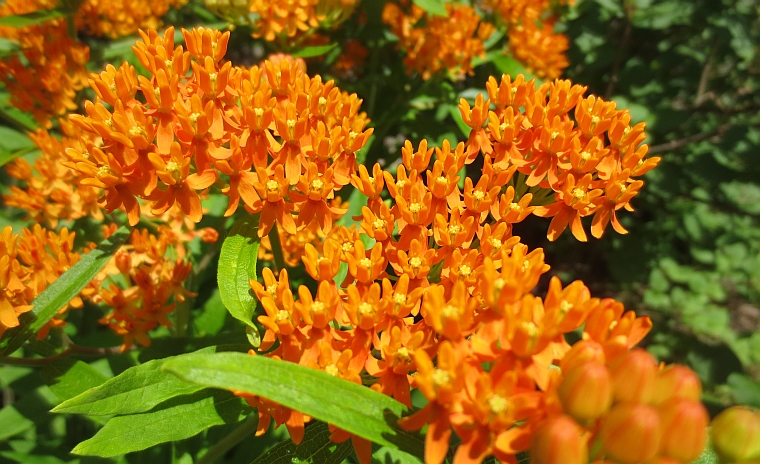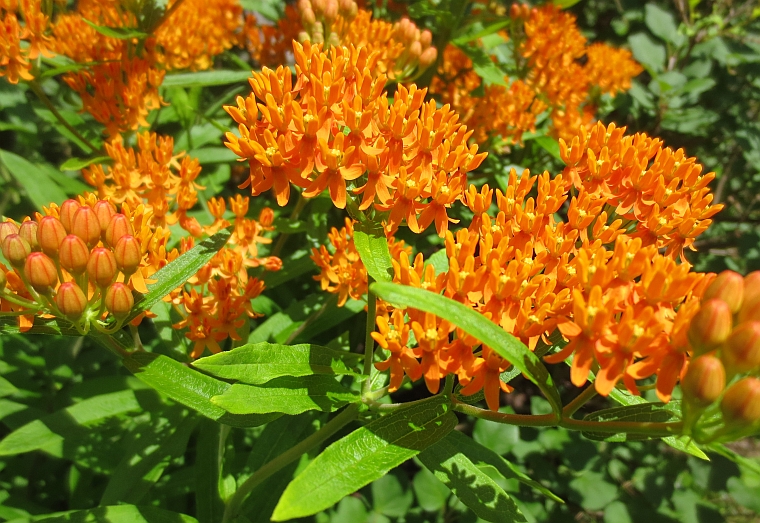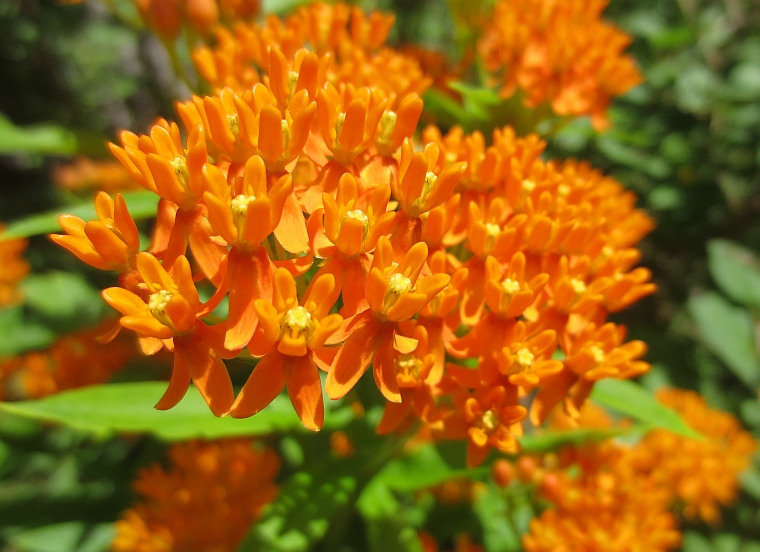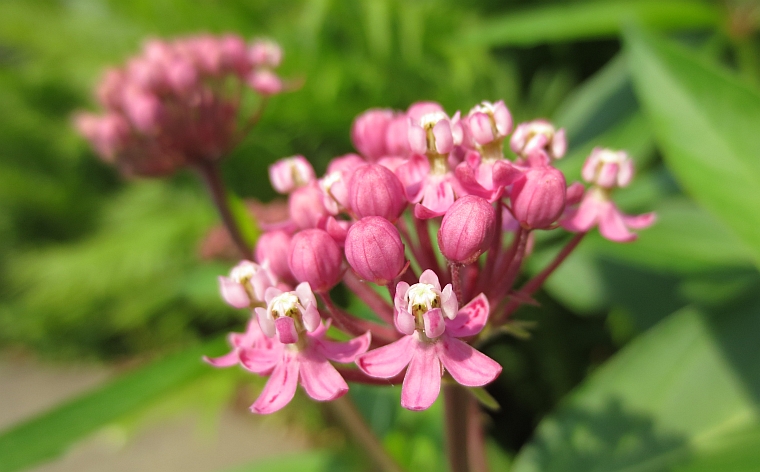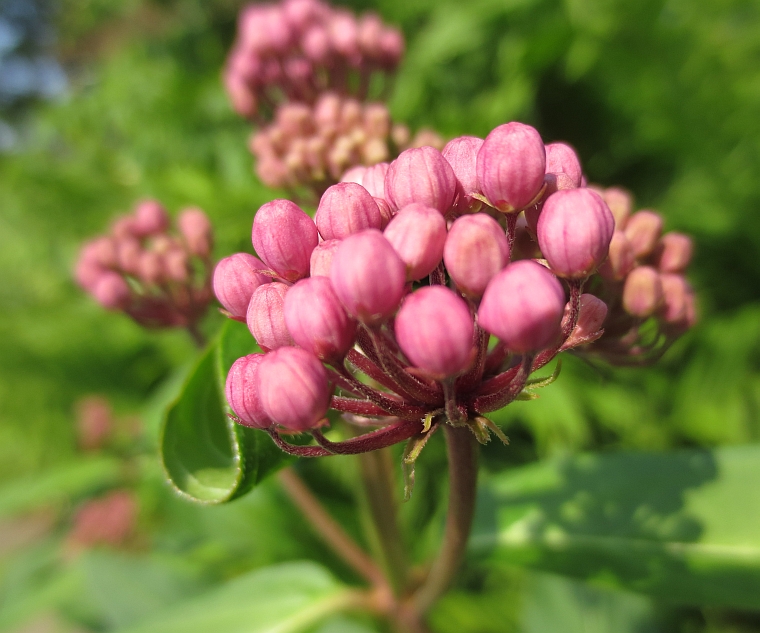It has the somewhat unfortunate common moniker of ‘weed’ attached to it, so I prefer the scientific name of Asclepias when referencing this favored stomping ground of butterflies and bees. A relative of the milkweed, these are the more refined border versions of that prolific native plant, whose colors have been honed into bright oranges and vibrant pinks. They make an excellent addition to the sunny perennial bed, as their colors are strong, and they produce at the height of summer.
Their milkweed association becomes more apparent when the flower-heads go to seed, producing the distinctive pods that we used to open and pry apart, releasing the feathery parachutes into the wind, a seed on the end of each. Like a dandelion, they were designed to spread far and wide by the lift of the wind. As such, these tend to re-seed throughout the garden if allowed to ripen (I usually dead-head the blooms so as not to weaken the plant for the following season, but the past few years it got away from me, so there are several more of these than intended. Not a bad thing for such a great plant.)
As mentioned, the butterflies love the Asclepias, and the caterpillar form especially may find its way along the stems, chewing on the developing seed pods. For the regally-striped monarchs-to-be, I allow them the snack.
This pink version grows slightly taller than its orange counterpart, falling closer in line to its milkweed kin. Its bloom time is also slightly earlier, but a bit shorter, making it the lesser of the two in my opinion. Still, I wouldn’t throw it out of bed or border.
Back to Blog
